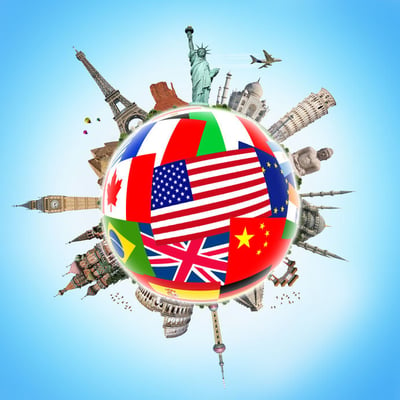Explainer: Origin of goods - Canadian customs
At Cole International, we believe that the more you know, the better your goods will go. Our Explainer posts provide valuable information you should know before you make your next move.
We understand that the logistics industry involves complex processes, regulations, and definitions that can be overwhelming to navigate. Cole's Explainer series breaks down key concepts into bite-size knowledge that's easy to consume.
In this Explainer, we’ll examine the rules of origin as set out by the Canada Border Services Agency (CBSA), when they are used, and how they affect you as an importer.
Rules of origin and tariff treatment
As you may already be aware, goods may be entitled to a tariff treatment if they meet the following requirements:
- rules of origin
- proof of origin requirements
- shipping requirements
- a term or condition contained in, or made following, a Free Trade Agreement
From here, to determine the duty payable on imported goods, the CBSA establishes the rates of these duties by taking into account:
- the origin of goods
- the applicable tariff classification number
In order for the rules of origin to be applied properly, you must classify your goods according to the Harmonized System (HS). Within the HS, each tariff treatment is linked to certain rules of origin and the origin of the good is shown as the two-digit tariff treatment code.
Claims for a preferential tariff treatment also need to meet shipping requirements (i.e. direct shipment, transit, transhipment) for that tariff treatment. These are the requirements your goods must meet while coming to Canada.
As an example, your goods must remain under control of Customs at all times, and not undergo any production other than unloading, reloading or splitting up of loads or operations required to keep the goods in acceptable condition (think: refrigeration, repacking, etc.)
Rules of origin and you
As an importer, the rules of origin will impact your goods and what tariffs are placed on your goods. These rules also impact your certificates of origin (CO). Recall, the CO is a legal document confirming the country of origin of a product. These COs are used to determine the correct duty and qualify imported products for reduced duty under any relevant free trade agreements (FTAs).
Generally, the CO is completed by the exporter affirming the goods have been produced, manufactured or processed in a particular country. (Note: While the exporter is responsible for this, it is always recommended that as the importer, you do your due diligence and understand fully where all of the goods that you ship are produced, manufactured or processed.)
As the predominant trade agreement in North America has shifted from NAFTA to USMCA/ CUSMA, there have also been shifts in how these rules are determined. Staying abreast of changes like these are essential to keeping your goods moving seamlessly.
The more you know...
If this Explainer post has been helpful, we invite you to continue growing your knowledge base by exploring our earlier Explainer posts:
Explainer: What is the difference between a refund and a drawback?
Explainer: container shortage and price increases for ocean cargo
At Cole International, we don't just help keep your goods moving. We believe education is key to your success. After all, the more you know, the more you ensure your goods get where they need to go. We’ve been in the customs brokerage business for more than half a century. We’re ready to help.
Your encyclopedia of trade knowledge. It's what we do.

Latest Articles
- Watch out for these extra charges on your freight bill
- Key differences between duty drawbacks and duty refunds for importers
- Mitigating container shortages and rising shipping prices for ocean imports
- How Canadian importers benefit from end use tariff codes and conditional relief
- The benefits of operating as a Non-Resident Importer in Canada
